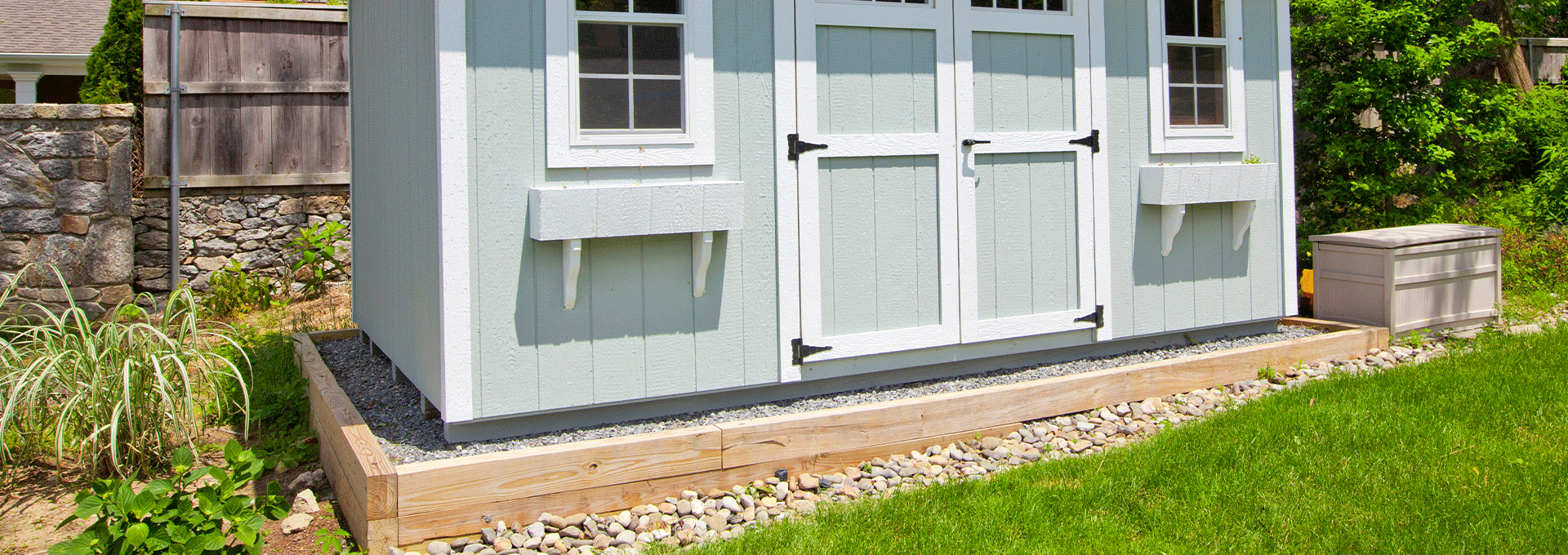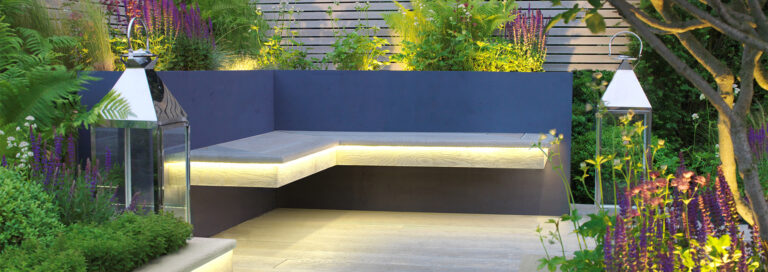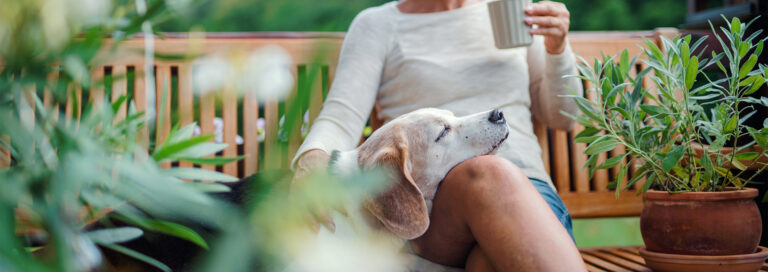From garden offices to simple storage sites, every good shed begins with a solid and level base. Luckily, whether you’re looking for a cost-effective option or something more durable and long-lasting, there are numerous garden shed base ideas to suit different needs and budgets. In this post, we’ll explore some popular and practical options to give you a solid foundation when it comes to making your choice. We’ll cover:
How to Decide
Roughly 9.6 million homes in the UK have a shed, each containing £983 worth of goods on average. Given the weight and quantity of contents our sheds often carry, a reliable base is essential to support the structure and protect it from wear and tear.
A proper garden shed base will prevent the shed from shifting, sinking, or otherwise becoming misaligned. Plus, without a solid foundation, water can collect around the underside of the shed, leading to rust, rot and pest infestations, putting the stored contents at stake.
So, for the millions of UK homes with sheds, choosing the right base is the first (and debatably most important) step towards longevity and durability. But with so many options on the market these days, how do you choose? We’ve come up with 5 key considerations to ensure that you make the right choice to suit your needs.
1. Durability
Firstly, durability is one of the most important considerations when it comes to any base for shed idea, especially given the heavy usage and exposure to the elements that UK sheds typically endure.
A durable base ensures that your shed remains stable, level, and supported throughout the years. Additionally, a durable base will help to protect your shed from moisture-related issues, such as rot or rust by keeping the structure adequately elevated. Investing in a long-lasting foundation will also reduce the need for repairs or replacements further down the road!
2. Aesthetics
Aesthetics are another key factor when choosing a garden shed base. Sheds are often an extremely prominent part of any garden, and so those who want to maintain a cohesive look should consider the style and visual impact of each option. Whilst the shed base may not be the visual star of the show, it can have a substantial impact on how the shed blends into its surroundings, and how ‘finished’ the garden feels.
3. Cost
Ultimately, we all want something that works well without breaking the bank! When it comes to cost, choosing between garden shed base ideas is all about balancing initial affordability with long-term value. While cheaper options may seem appealing, you should also consider any potential additional costs as the base ages, including repairs and replacements.
4. Ease of Installation
If you’re planning to tackle the project yourself, you’ll need to balance the demands of the garden shed base idea with your skillset. Quicker and simpler options usually involve minimal groundwork whilst complex foundations may involve a much longer and technically laborious process. It’s like assembling a piece of furniture: some bases can be laid in an afternoon whilst others might need careful planning and professional expertise.
5. Versatility and Logistics
Not all garden shed base ideas are created equal. Some may only work for relatively small and lightweight sheds, whilst others may be able to support larger and heavier structures. A versatile shed base can accommodate and so can be particularly useful if you’re looking to expand or modify your setup in the future.
Shed-Off: 5 Garden Shed Base Ideas
Now that you know the key factors to consider when navigating base ideas, it is time to see how the most popular options perform. In this section, we’ll explore different garden shed base ideas, considering our five key factors – durability, aesthetics, cost, ease of installation, and versatility – along the way.
To help you make an informed decision, we’ll score each base factor of 5 and then calculate an average score for each base idea. The higher the end score, the better the shed base idea is all-round. However, remember that these scores are just a starting point. You might still prefer one base over another depending on your specific needs or style!
1) Concrete Slab
A concrete slab base is a simple and solid foundation made by pouring concrete onto a prepared area to create a flat surface. Durable and permanent, it provides excellent structural stability for your shed as it is resistant to pretty much anything the environment can throw at it.
Aesthetically, a concrete slab base doesn’t have much going on. The strength of this option really lies in the functionality of the structure. However, it can be covered or surrounded with landscaping to improve its look.
In addition, a well-laid concrete slab offers a long-lasting foundation that can handle even the heaviest and largest sheds with minimal maintenance. However, installation can be quite an intense process, requiring a significant amount of excavation and groundwork to be done properly.
On average, a concrete slab base will cost more upfront compared to other base options: you’ll have to factor in the price of concrete, any preparation work, and possibly even hiring professionals to pour and cure the slab. Once you’re over these initial costs though, the investment pays off in the long run due to the base’s strength and durability.
- Durability – 5/5
- Aesthetics – 3/5
- Cost – 2/5
- Ease of Installation – 2/5
- Versatility – 4/5
Average Score – 3.2/5
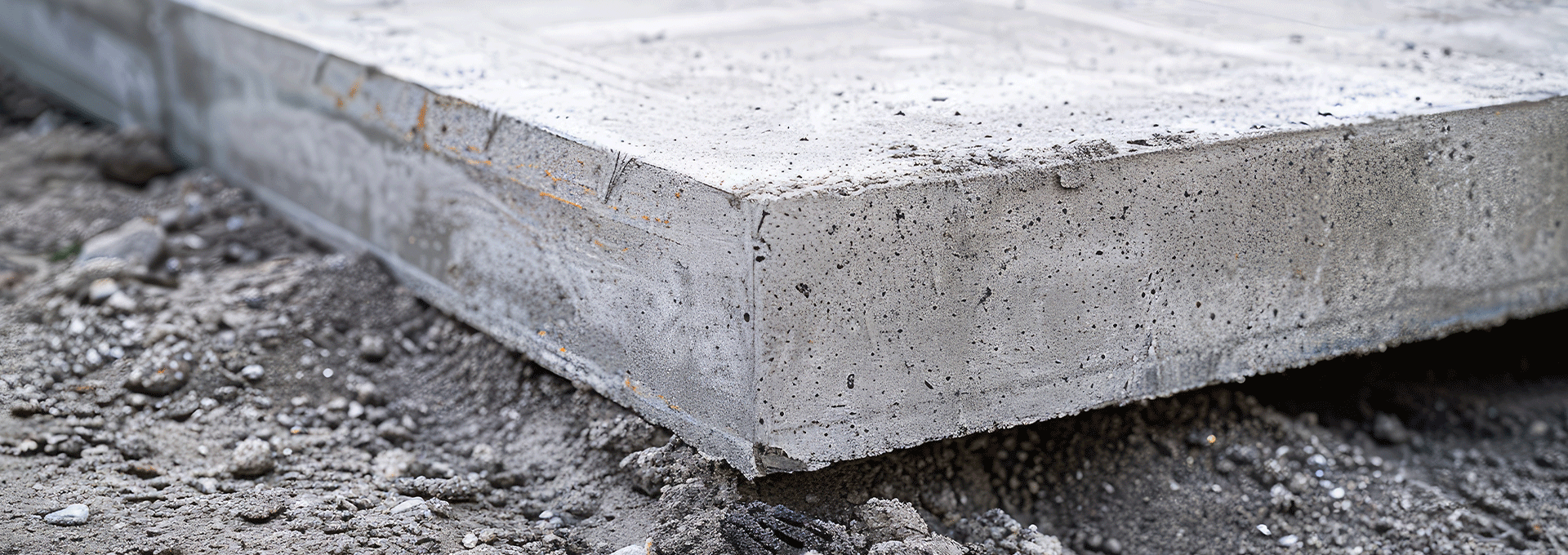
2) Wooden Decking
Using wooden decking as a shed base usually involves laying pressure treated timber boards on a level surface in order to create a platform. For extra support, timber bearers can be used to raise the shed off the ground, allowing for better air circulation and moisture resistance.
This option provides an aesthetically pleasing look with a natural vibe, adaptable to rustic and contemporary gardens alike. It is also a versatile choice, since it can be easily adjusted or expanded for various shed sizes. However, if you’re dealing with uneven or challenging terrain, this garden shed base idea might not work for you, given the need for a level surface.
Choosing pressure-treated options can extend the lifespan of the decking base, but wooden decking will generally require regular maintenance to prevent rot, warping, and wear. Despite these regular maintenance requirements, it is relatively easy to install, especially for DIYers. The materials are lightweight, and the process is straightforward.
In terms of cost, a wooden decking base is not as expensive as concrete, but it will still set you back a moderate amount. Especially with the additional maintenance requirements, it is a middle-ground option in terms of price.
- Durability – 3/5
- Aesthetics – 5/5
- Cost – 3/5
- Ease of Installation – 4/5
- Versatility – 4/5
Average Score – 3.8/5
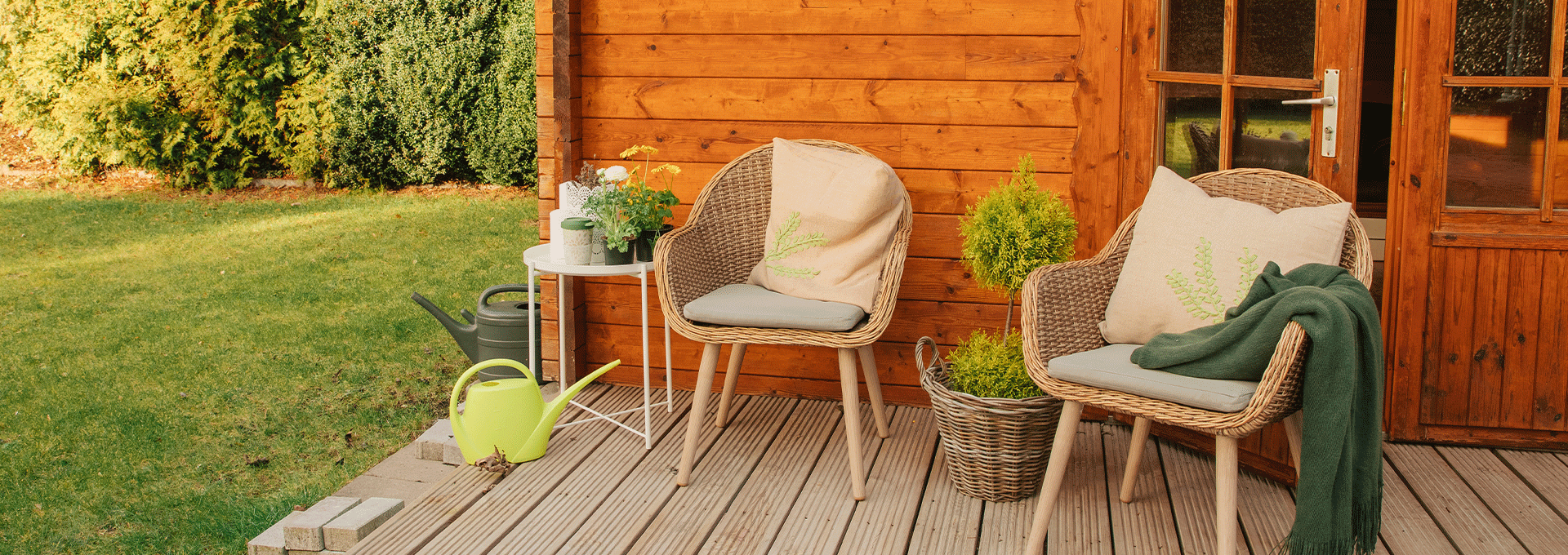
3) Gravel/Stone Pad
A gravel and stone pad base entails laying a bed of gravel or small stones on a level surface. This base is particularly effective for a well-draining foundation that prevents moisture from accumulating under the structure. It is usually also framed with timber or another edging material to keep the stones in place and prevent them from spreading under the weight of the shed.
Gravel is one of the most affordable garden shed base ideas, making it a great choice for those on a budget. However, costs may vary based on the type of gravel and your chosen framing material. Plus, since it isn’t as sturdy and permanent as other options, it may require periodic maintenance and replacement to keep the surface level.
That being said, gravel and stone pad bases are very versatile, working well with most sheds and in most terrains. Since it is easy to install – requiring just the ability to level the ground and even the gravel out – it is a quick solution for those looking for a simple, adaptable garden shed base idea.
- Durability – 3/5
- Aesthetics – 3/5
- Cost – 4/5
- Ease of Installation – 4/5
- Versatility – 4/5
Average Score – 3.8/5
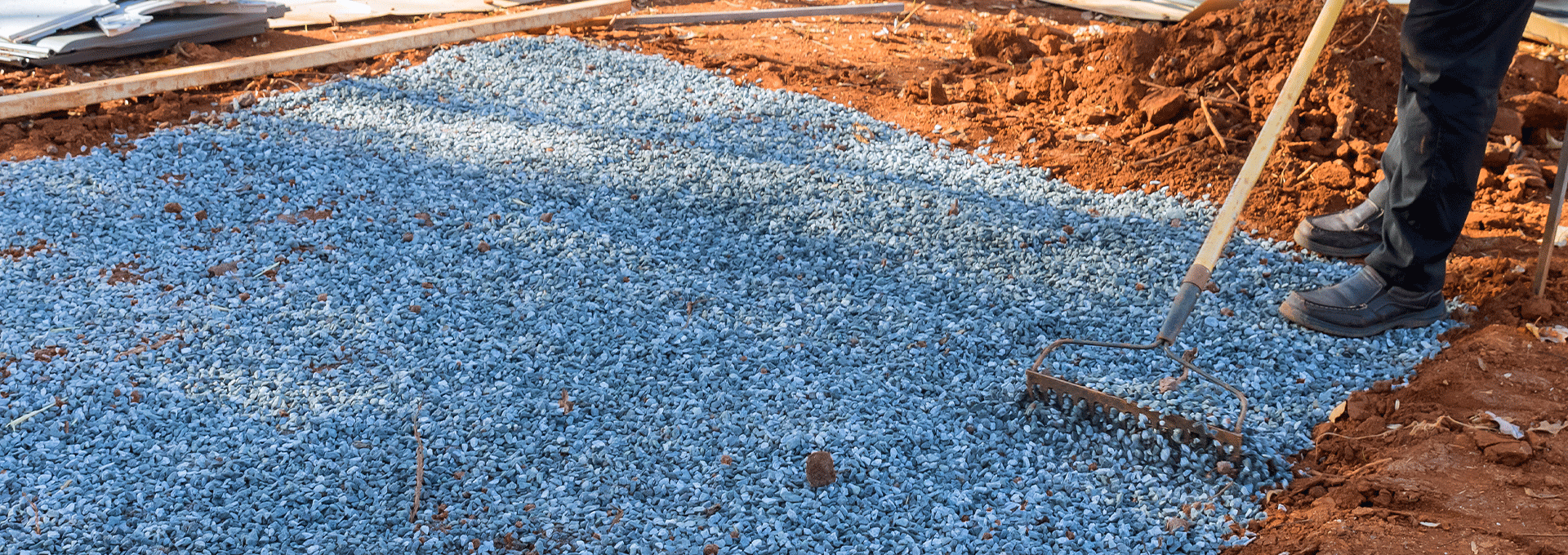
4) Plastic Grids
Plastic grids are a relatively new shed base solution consisting of interlocking plastic panels made of tough, high-density material. Typically, the resulting grids will also be filled with gravel or soil to provide support whilst also allowing for proper drainage.
The material of plastic grid bases is resistant to wear, weather and decay, meaning that they offer solid durability and require little maintenance. The panels are also lightweight and easy to install without requiring too much preparation outside of making sure the ground is level.
Like wooden decking, plastic grids fall in the middle in terms of cost. The specifics depend on the quality of the chosen panels, and the side of the grid area needed, but they remain a good compromise between budget and functionality up to medium-sized sheds. For larger or heavier sheds, it’s probably better to pass on plastic grids as they may not provide a suitable level of stability.
If the gravel or soil inside the grid isn’t carefully maintained, the aesthetics of plastic grid bases can risk being a little utilitarian. However, once filled, they can blend nicely into the surrounding ground, especially with the right materials.
- Durability – 4/5
- Aesthetics – 3/5
- Cost – 3/5
- Ease of Installation – 4/5
- Versatility – 3/5
Average Score – 3.4/5
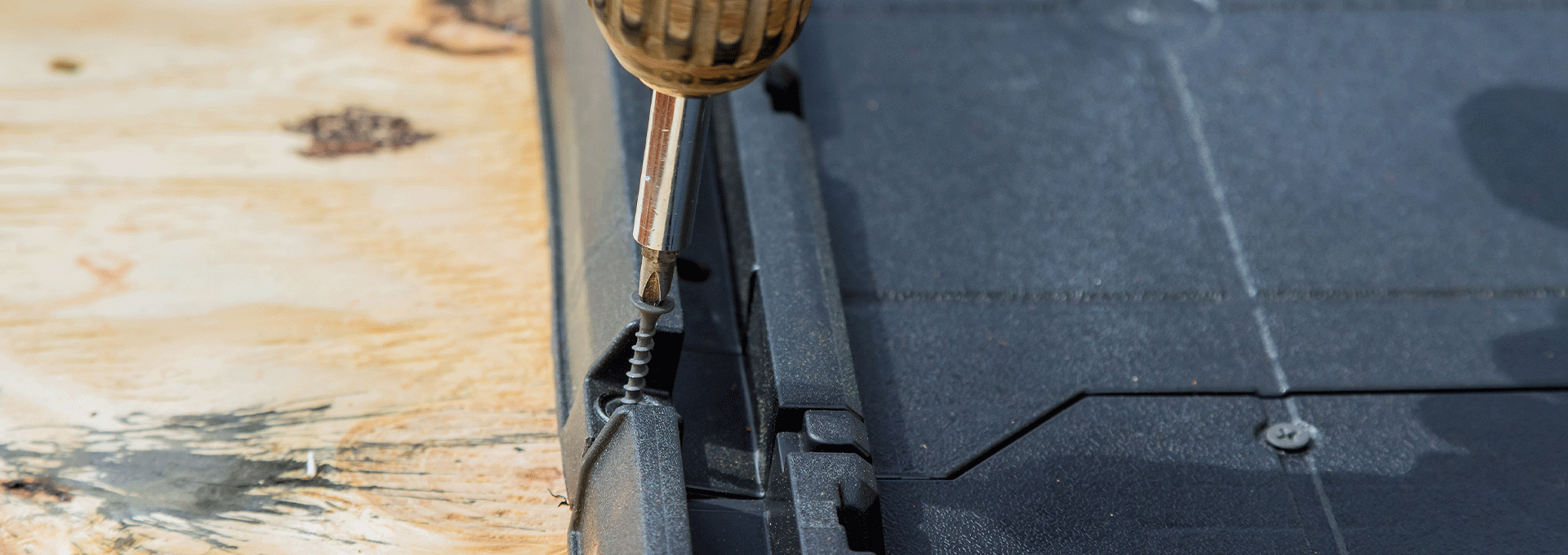
5) Timber Frames
For a garden shed base idea that works well for most garden terrains and complements a range of shed styles, timber frames can be a great option. The beams are usually arranged in a grid or frame with the shed resting on top, raised above the ground. This makes a timber base particularly effective at protecting your shed from moisture damage.
However, as with wooden decking, timber frames will require regular maintenance to protect against rot, especially in damp conditions. Pressure-treated materials are more resistant, but you’ll still need to inspect and treat the structure periodically. Subsequently, the initial affordability of a timber base can be quickly balanced by repairs and maintenance requirements.
For experienced DIYers, timber bases can be a breeze. The materials are easy to acquire and the framework can be built quickly to fit a wide variety of shed shapes and sizes. However, securing the timber well is important to ensure stability, especially if the shed will be regularly used to house heavy contents.
- Durability – 3/5
- Aesthetics – 4/5
- Cost – 3/5
- Ease of Installation – 3/5
- Versatility – 3/5
Average Score – 3.2/5
Conclusion: The Best Ideas for Shed Bases
So, there you have it! Whether you go for the durability of the concrete slab or the ease of the plastic grid, there is a garden shed base idea that is perfect for you (and your shed!). The key is finding the one that fits your needs and personal preferences, balancing durability, aesthetics, cost, installation, and versatility.
Now that you’ve got the lowdown on the most popular shed base ideas, it’s time to get cracking! Not ready to get going just yet? Stick around. There’s plenty more where this came from on our garden and landscaping blog.

